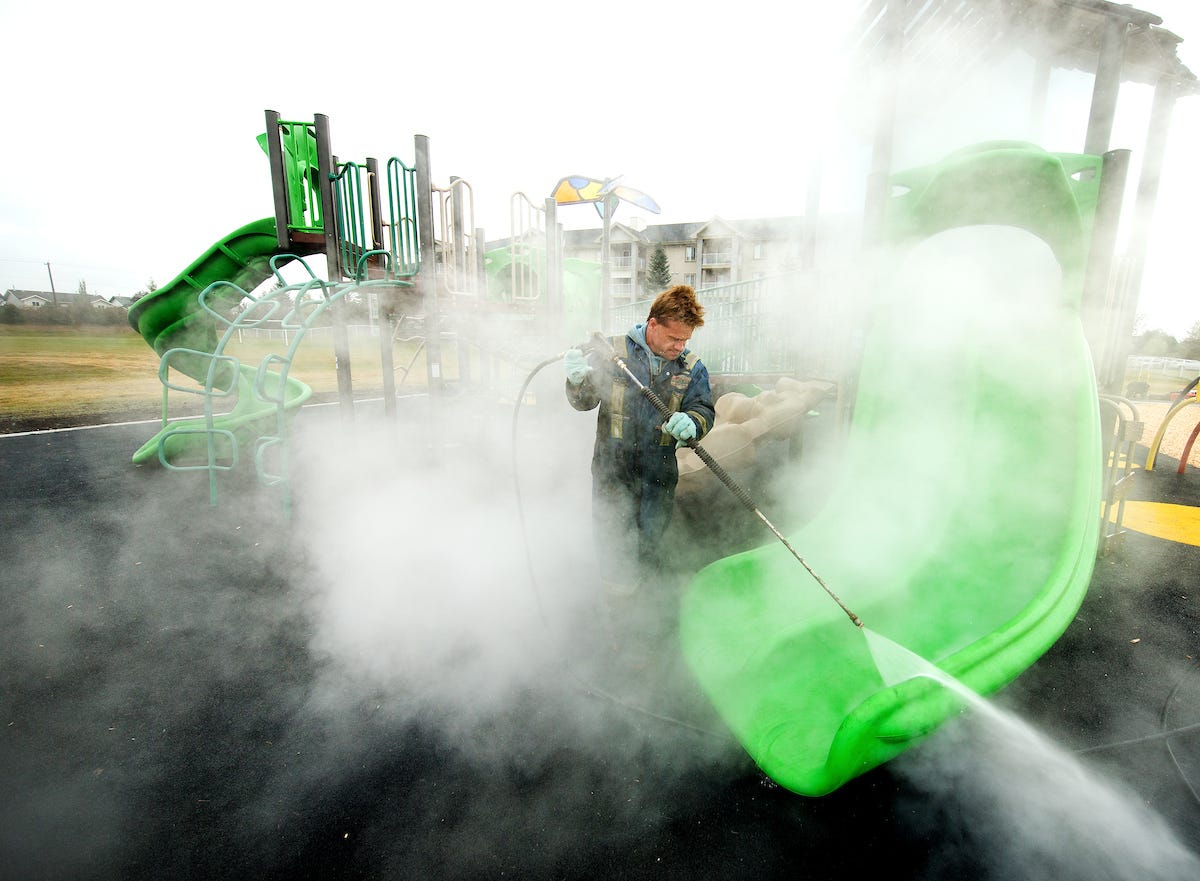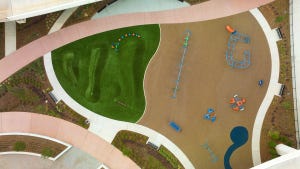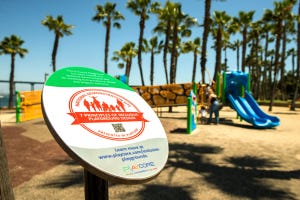After the Flood
As communities in Texas and Florida begin recovery after Hurricanes Harvey and Irma, we wanted to share some advice on inspecting your playground equipment after a flood. These tips come from Bryan O'Conner, Texas native and GameTime representative who lives in the Houston area. Bryan and his family are safe and recovering from Hurricane Harvey. When he shared this advice with us, we asked how the recovery effort was going. He responded, "We are Texans, and we will get it done!"
We stand with you, Bryan, and with all of our friends in Texas and in Florida.
Close and Inspect
If you have significant, obvious damage, like trees falling on your equipment, or if the equipment itself sustained significant damage from the wind or flood water, the first step is to close the playground to the public and call the manufacturer immediately.
If your playground equipment was ever submerged in the floodwater, but the water has receded, it needs to be inspected nonetheless. It may be just fine and ready for use, but here are a few things that need to be checked:
- Check for erosion around the footings. If there is significant erosion, the playground should be closed. Contact your playground manufacturer immediately.
- Inspect all the hardware (nuts and bolts) to see if any are loose or missing. Tighten any that are loose, replace any that are missing.
- Double walled rotationally-molded plastic components like slides, climbers, and panels may have filled with floodwater. This needs to be drained. The best way to drain the component is to drill a small hole on the underside to allow drainage. We suggest a ¼” hole or smaller, and in a low, but an unused area of the component (for example, on the bottom side of a slide).
Before you reopen a playground that has been subjected to flood waters, clean it with fresh water. There have been reports of hazardous chemicals and sewage in the flood waters. Pressure washers work well for cleaning playground equipment. Make sure you clean every part of the equipment, especially places where children place their hands. NOTE: Use caution with pressure washers to avoid damage to the paint or the equipment.
If you are in the coastal counties, and your equipment was submerged, or even sprayed by saltwater, it especially needs to be rinsed with fresh water as soon as possible. Playground manufacturers go to great lengths to prevent corrosion, but salt water from a storm surge is particularly corrosive. Wash every surface of your playground with fresh water as soon as possible.
Look at any moving parts – suspension bridges, tic-tac-toe panels, swings, moving climbers, spinners, whirls, and merry-go-rounds. These all need to be moved a bit to make sure the internal mechanisms aren’t full of debris and sand. If they don't move normally, flush the moving parts with fresh water. There may be sand and silt embedded in the pivoting mechanism. If water frees up the movement, let it dry and lubricate as recommended by the manufacturer - (aerosol white lithium grease works well on GameTime equipment). If it does not free up with cleaning and lubrication, please contact the manufacturer.
Safety Surfacing
The part of the playground that is most at risk in these situations is typically the safety surfacing. Different types of surfacing will require different care, but all should be inspected:
With man-made surfacing that has been submerged under flood waters, the main problem is debris that is left behind after the flood. Obviously, all the big items like limbs, logs, lumber, and trees need to be removed. Check to see if the surfacing has been torn or gouged from impacts. If so, the safety surfacing will need to be repaired by the manufacturer. Repair the surfacing quickly. A small tear can quickly become a large rip, Left unattended, a massive area can pull away from the base material resulting in a more costly repair. Surfacing like ‘poured-in-place rubber, rubber tiles, and bonded-shredded rubber includes ‘voids’ in the material that allows it to compress. If silt, sand or dirt has filled all these voids from flooding, the material will become hard, and not meet the cushioning requirements. The best way to get the debris out of the voids is to ‘flush’ the material with fresh water. DO NOT USE A PRESSURE WASHER. The force of a pressure washer can tear apart the material, and cause additional damage. The material needs to be flushed out witlow-pressurere water. We’ve found that a fire hose at it’s lowest flow setting works best. Saturate the area so that the silt is flushed out of the voids and the surfacing material can work correctly. This is important for the life of your material. If the debris is left in the voids, it can cut up your surfacing from the inside out. It will start cracking and flake away over time.
For synthetic turf, remove any large debris items (trees, limbs, logs, storm debris). If the turf ‘wrinkled’, like a bed sheet, it needs to be re-stretched – contact your manufacturer. If it seems to have remained in place, check it for the proper in-fill material. The infill will often float or blow away during a Hurricane. Without the infill, the turf will start to lay over and become matted. It can also move around and wrinkle. If there is not sufficient infill, please contact the manufacturer. It may just need to be brushed to relocate it back to the right area.
For natural surfacing like Engineered Wood Fiber (EWF), often called wood chips, the most frequent situation is that it floated off. If it’s still there, remove the large debris, and then check it for the correct depth. Most playground manufacturers put stickers on the uprights of their equipment to indicate the correct level of surfacing material. If the stickers are showing, you need to top-off the material. Ensure (after the flood water recedes) that there is proper drainage. Nothing shortens the life of EWF quicker than poor drainage. The material will rot quickly. If kept dry and clean, the material will last much longer. Some will be tempted to ‘till’ the material. I recommend against it. However, it may aid the drying after a flood. It will take time and use until the material knits and weaves back together to give it the surface tension properties that aid with accessibility.
Document Everything
As you evaluate your parks we suggest that you take pictures of any damage you see. You will need it for many aspects of recovery, including FEMA documentation, insurance claims, and repair or replacement parts from your playground manufacturer. It's also helpful to photograph
We're Here to Help
GameTime has representatives in Texas, Florida and around the world who can help you inspect your playground and put together a maintenance plan for you. Even if you haven't endured a massive weather event, we are always available to provide advice and assistance. Contact us or request a free copy of our Playground Maintenance Guide with additional tips on keeping your play area in top shape for years to come.






